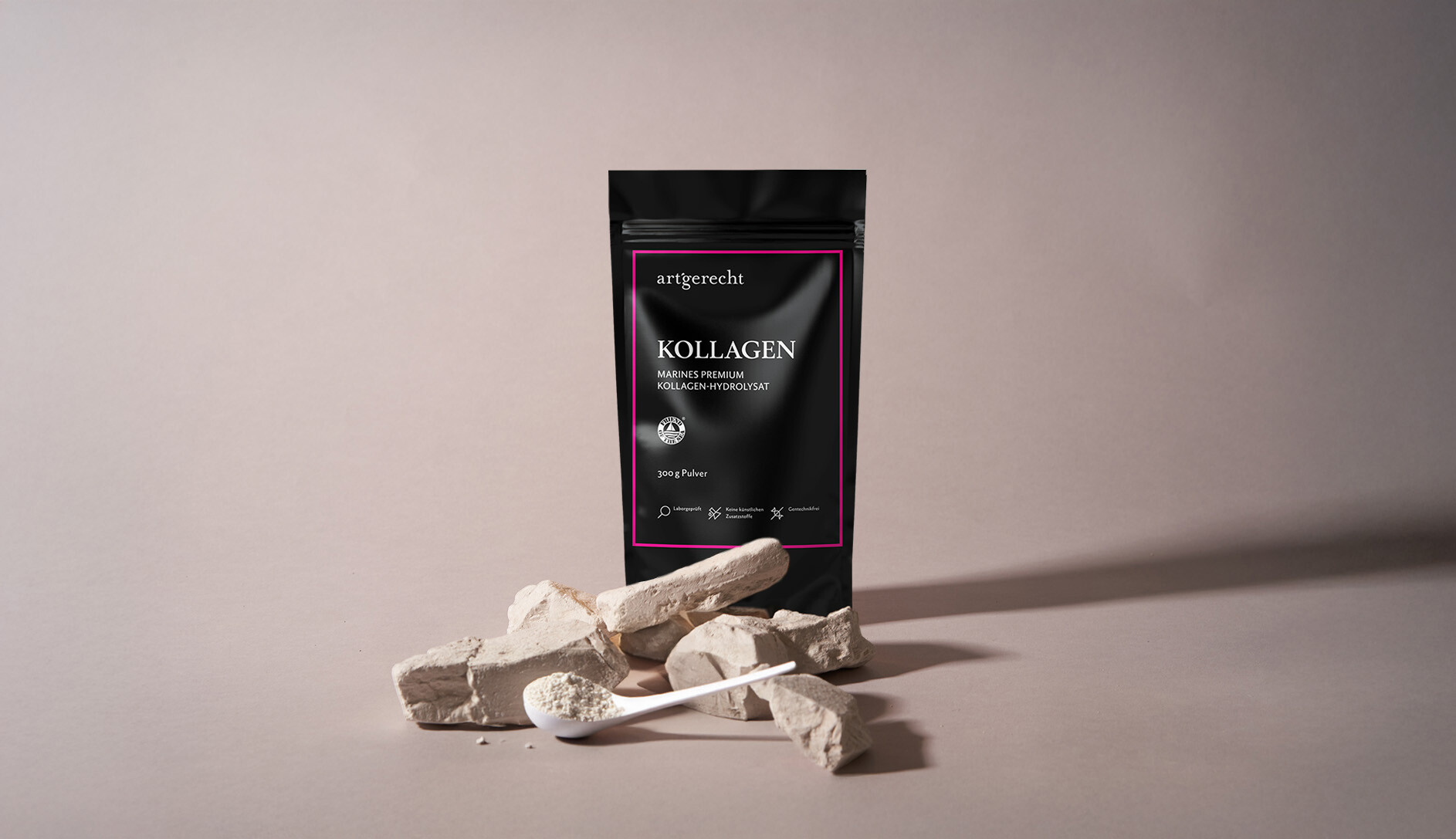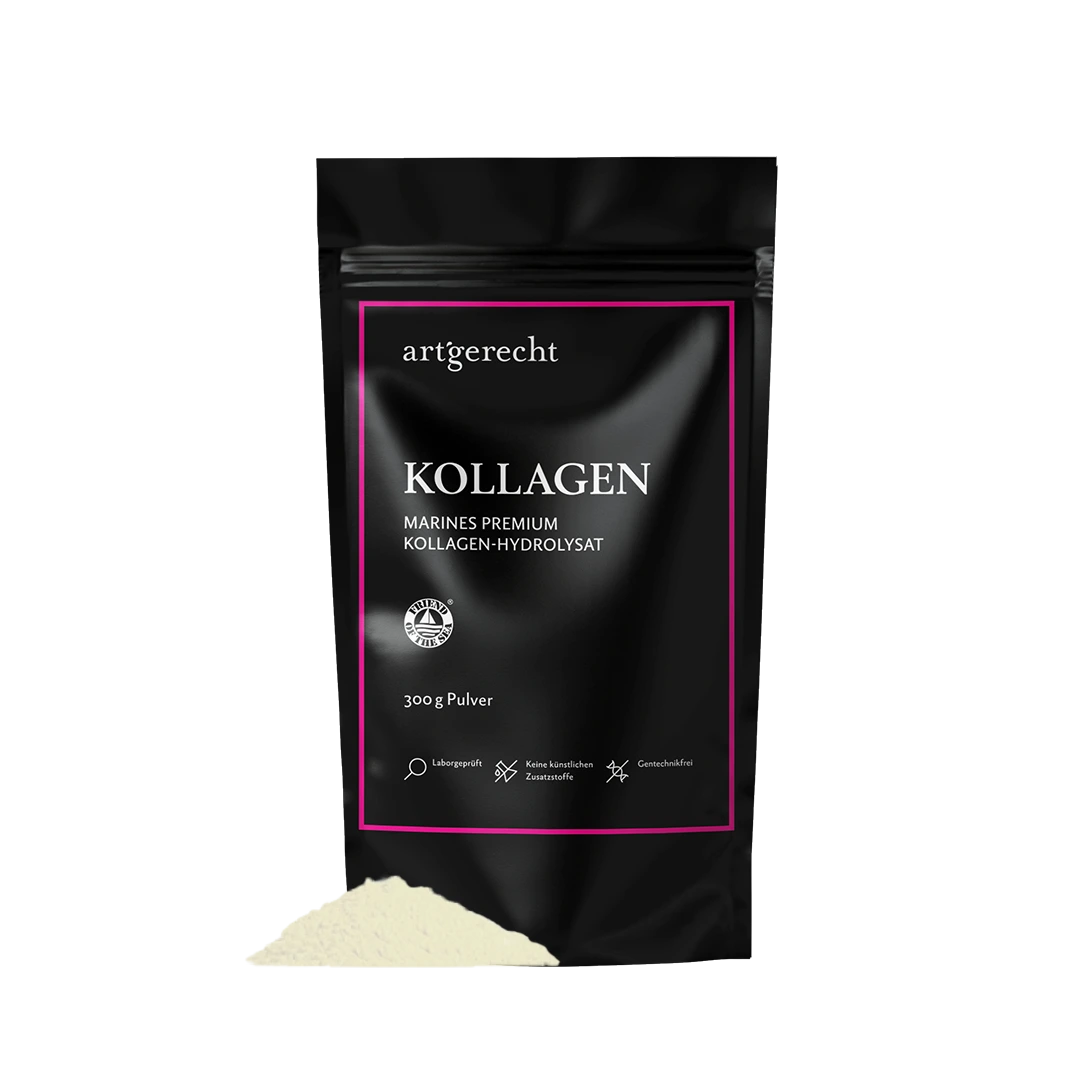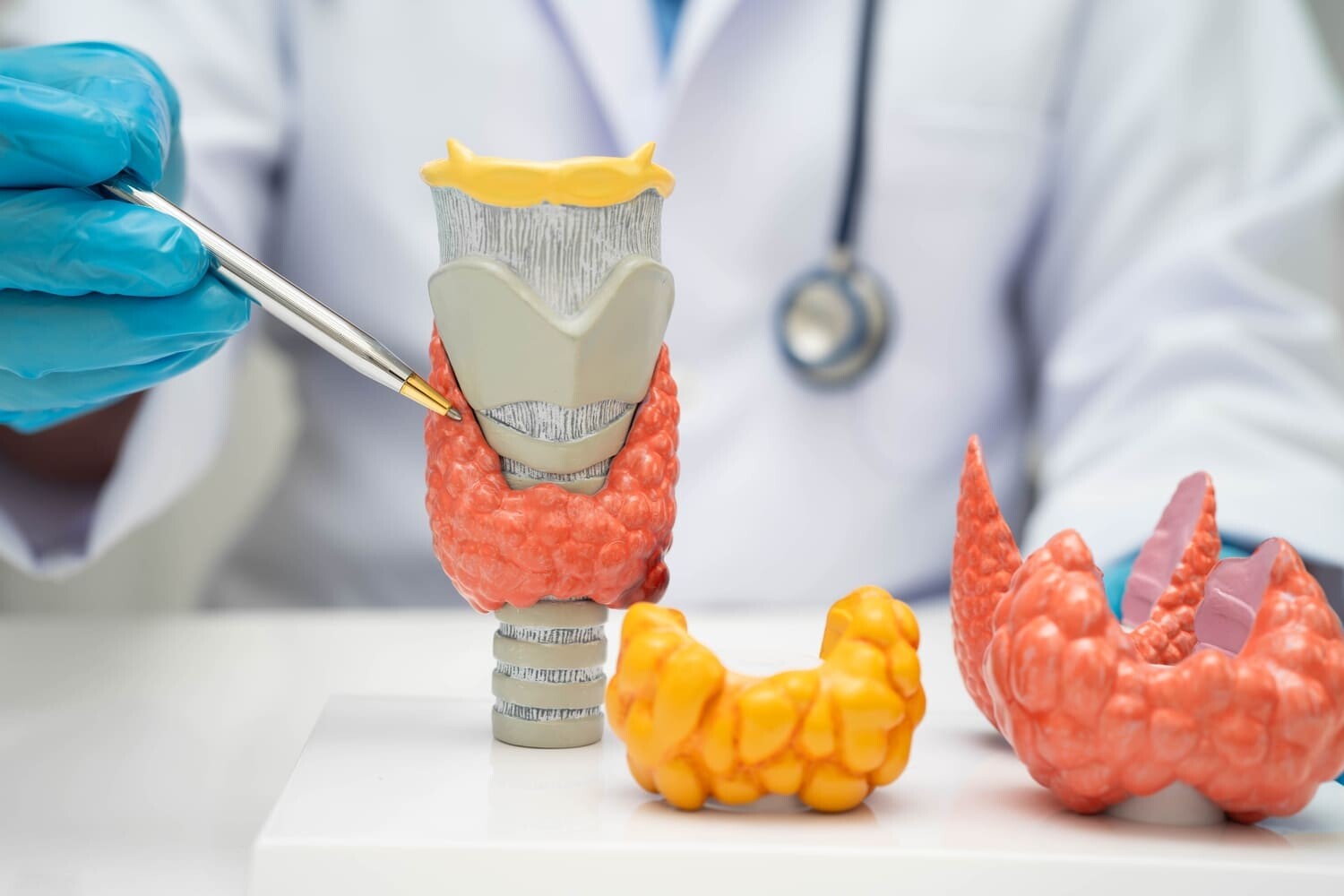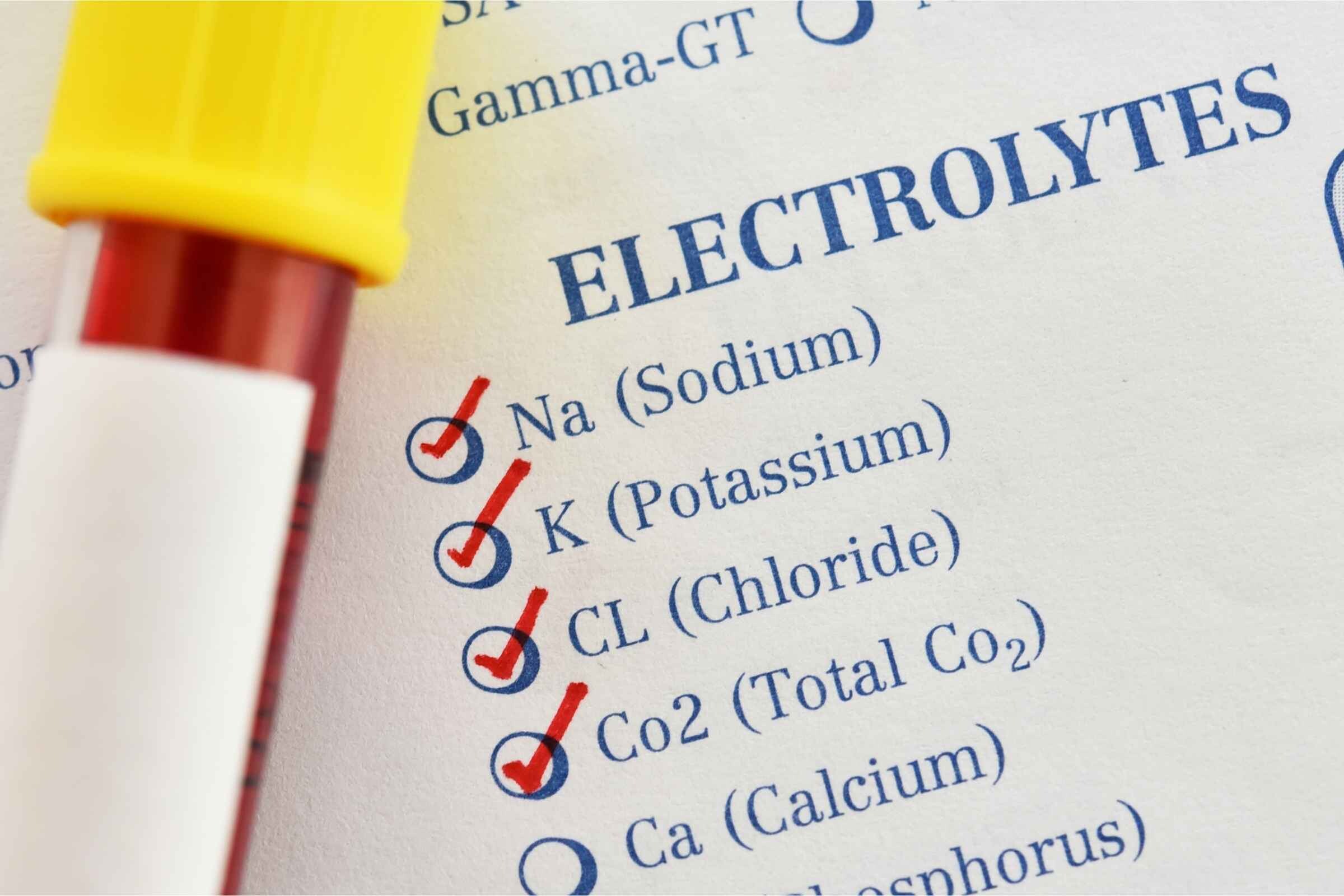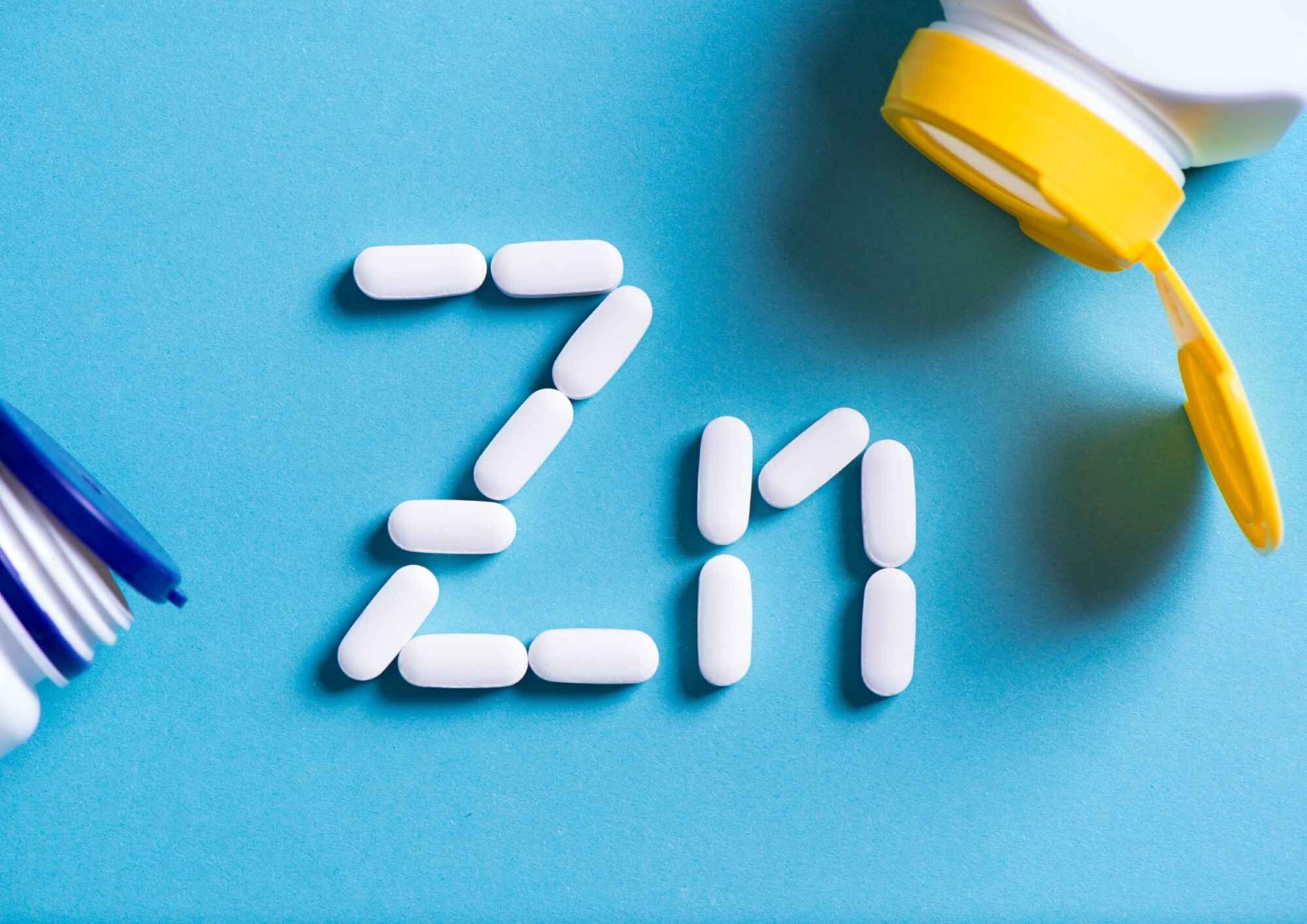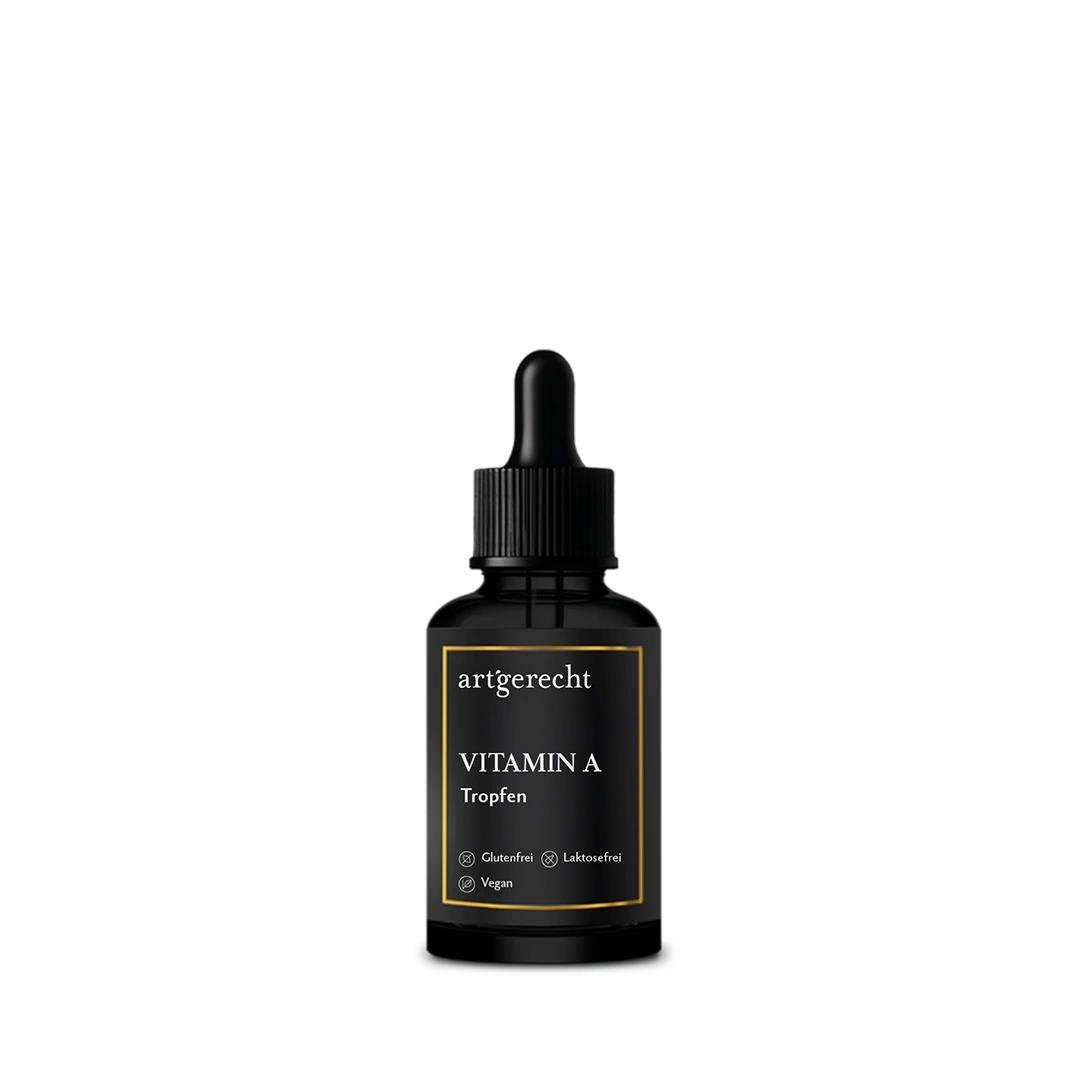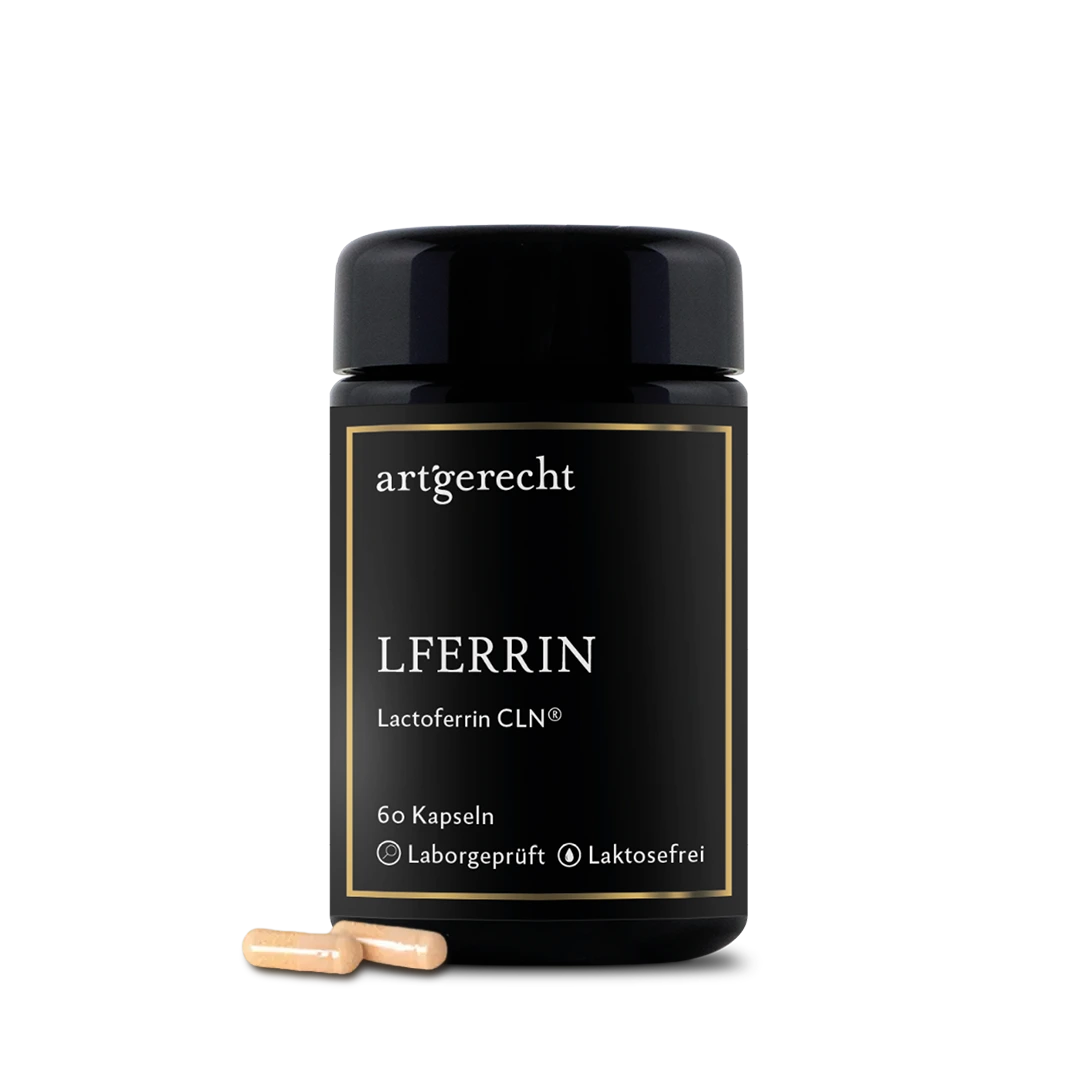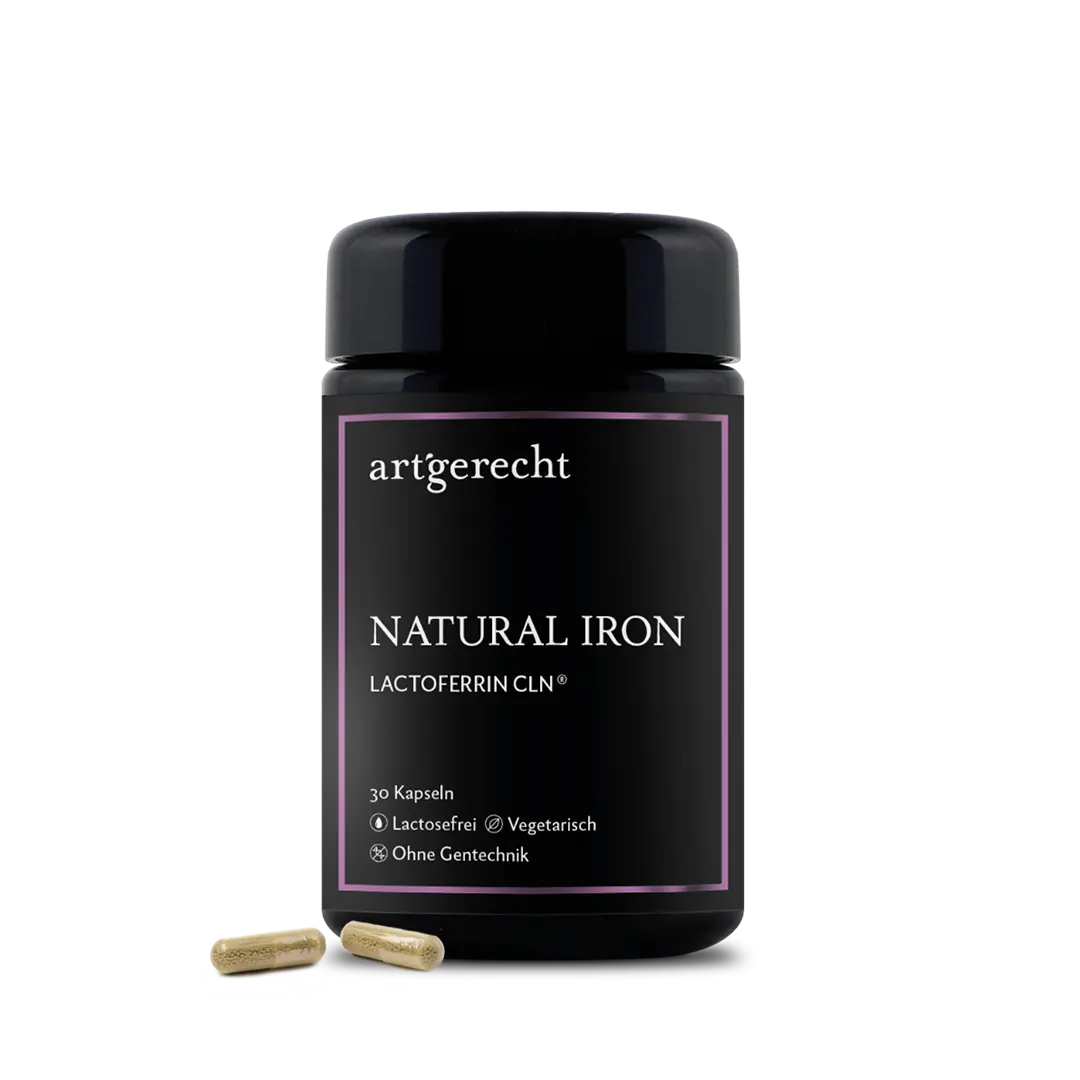- Collagen – More than just a promise of beauty
- What is collagen?
- The-most-important-benefits-of-collagen-for-health
- Collagen and joints: protection and flexibility
- Intestinal health: collagen and the intestinal barrier
- Collagen in the diet: natural sources and food supplements
- Why our collagen from species-appropriate?
Collagen – More than just a promise of beauty
Collagen is one of the most important proteins in our body – and yet many people only pay attention to it when the first signs of skin ageing, joint problems or weaker connective tissue become noticeable. Yet collagen has played a central role in our health since birth. It gives our cells structure, ensures elastic skin, stable bones and resilient joints. From around the age of 25, however, the body's own production begins to decline continuously - with visible and noticeable consequences for our well-being. But what exactly is collagen? What different types are there and why does its production decrease with age?
What is collagen?
Collagen is the most important structural protein in the human body and a central component of connective tissue. With a share of around 25 % of the total protein mass, it is the most common protein in the organism. It is found in almost all supporting tissues - especially in skin, bones, cartilage, tendons, ligaments, blood vessels, fasciae and in the cornea and dentin of the teeth.
Structurally, collagen belongs to the class of fibrous (fiber-forming) proteins, which together with polysaccharides and adhesion proteins form the extracellular matrix (ECM). This matrix is the scaffold tissue that connects cells to each other, provides structural stability and transmits biochemical signals.
The variety of collagens is huge: at least 28 different types (I–XXVIII) are known to date. They can be functionally divided into three main groups: fibril-forming collagens, fibril-associated collagens and network-forming collagens. Collagen type I is particularly important. It makes up around 90% of all collagen and is the main component of skin, tendons, ligaments and bones, i.e. wherever stability and tensile strength are required. Type II is mainly found in cartilage tissue and plays a decisive role in the elasticity and resilience of joints. A lack of type II collagen can play a role in osteoarthritis, for example.
Type III collagen is often found together with type I - especially in the skin and blood vessels - and supports the elasticity of the tissue. It is particularly activated during wound healing and is also important in early embryonic development.
Each type of collagen performs a specialized task, but together they ensure resistant, stable and functional connective tissue throughout the body.At the molecular level, collagens consist of polypeptide chains, the so-called α-chains, which join together to form a characteristic triple helix - a right-handed spiral structure consisting of three left-handed helices. This special network is decisive for the high tensile strength and structural stability of collagen. The amino acid composition is unique: glycine, proline and hydroxyproline together make up about half of the amino acids in collagen. The frequent occurrence
These building blocks ensure tight coiling and firm binding of the helices - a decisive factor for the stability of connective tissue
The-most-important-benefits-of-collagen-for-health
Collagen and the skin: firmness and moisture from within
Collagen forms the framework of the skin and is responsible for its firmness, elasticity and moisture retention. As long as the body produces sufficient collagen, the skin remains firm and smooth. However, this process slows down over time, causing wrinkles to appear and the skin to lose its elasticity. An adequate supply of collagen can help to strengthen the skin's structure, bind moisture in the cells and support skin regeneration.
strong hair thanks to collagen
Collagen also plays a crucial role in hair health. It supports the structure of the hair follicles and can have a positive effect on hair growth. With stable connective tissue, the scalp remains elastic and well supplied with blood - an important prerequisite for strong, healthy hair. Collagen also contains important amino acids that serve as building blocks for keratin, the main component of our hair. Collagen can therefore help to counteract hair loss and strengthen the hair from the inside out.
Beautiful, resilient nailsBrittle and thin nails are often a sign of a lack of important nutrients, including collagen. As it ensures the stability of connective tissue, a sufficient supply of collagen can help to make nails more resistant and support their growth. Anyone who frequently has to contend with fragile nails can benefit from a better collagen supply. [2]
Joints and bones: Mobility and protection
Collagen plays a crucial role in the health of joints and bones, as it is the main component of connective tissue and provides structure and stability. Without collagen, both cartilage and bones would lose their strength and elasticity, which can lead to wear and tear and discomfort in the long term.
Collagen and joints: protection and flexibility
In the joints, collagen - especially type II collagen - ensures the resilience and elasticity of the cartilage. Cartilage acts like a shock absorber between the joint bones and prevents them from rubbing against each other during movement. Natural collagen production can decrease with age or due to high levels of strain, e.g. during sport or physical work. This makes the cartilage thinner and less elastic, which increases friction in the joints and can lead to discomfort or even osteoarthritis.
This process can be slowed down by supplying collagen. Collagen supports the regeneration of cartilage tissue by promoting the body's own production of cartilage components such as glucosamine and chondroitin. It also helps to reduce inflammatory reactions in the joints and maintain joint mobility.
Bones consist not only of minerals such as calcium and phosphorus, but also to a large extent of collagen, especially type I collagen. It forms the framework of the bone, to which minerals attach, giving the bone its strength. Without collagen, bones would be brittle and more susceptible to fractures. With increasing age, the collagen content of bones also decreases, which increases the risk of osteoporosis.
Intestinal health: collagen and the intestinal barrier
Collagen is an essential structural protein that is not only important for skin and joints, but also for intestinal health. It contributes to the integrity of the intestinal mucosa by supporting the formation of connective tissue and thus strengthening the intestinal barrier function. An intact intestinal barrier prevents harmful substances from entering the bloodstream and protects against inflammation. Collagen can also have anti-inflammatory properties, which can be helpful in alleviating intestinal disorders. [4]
Collagen in the diet: natural sources and food supplements
If you want to support your collagen production in a natural way, you should specifically include foods in your diet that are rich in collagen or collagen-promoting nutrients. Animal products in particular contain directly usable collagen, while certain plant-based foods stimulate the body's own collagen production. One of the best natural sources of collagen is bone broth, which releases valuable collagen peptides through the long boiling of bones, which the body can easily absorb. Fish skin and fish scales also contain a lot of collagen, especially type I, which is essential for skin and hair. Those who like to eat poultry can opt for chicken skin and cartilage, as they mainly provide type II collagen, which supports the joints. Beef and beef tendons are also rich in collagen, especially type I and III, which have a positive effect on skin and connective tissue. Another good source of collagen is gelatine, which is obtained from bovine collagen. Even eggs, especially the membrane of the eggshell, contain valuable nutrients that can promote collagen production.
Since plant-based foods do not contain collagen directly, it is important to make sure you get the right nutrients to support collagen synthesis in the body. Vitamin C from citrus fruits, peppers or berries is crucial for collagen formation. Zinc, which is found in nuts, legumes and pumpkin seeds, also plays a key role in collagen production. In addition, sulphur-containing foods such as garlic, onions and cabbage help to stabilize collagen and maintain its structure. [5]Why our collagen from species-appropriate?
Collagen supplements are available in various forms - as a powder that can be easily mixed into drinks, in practical capsules or as a ready-to-drink liquid. High-quality collagen supplements, such as those from artgerecht, rely on natural ingredients and a well thought-out combination of essential micronutrients to optimally nourish the skin, joints and bones. Artgerecht products come from sustainable sources and contain hydrolyzed fish collagen (type 1, particularly beneficial for tissue), which is broken down into smaller peptides in the body through special enzymatic processing. This has the great advantage that the body can absorb and utilize it particularly well. Sustainability is also very important to artgerecht at this point, as fish skin not only has better bioavailability as a source of collagen, but is also much more sustainable than obtaining collagen from traditional animal sources, which is also confirmed by the „Friend of the sea“ certificate. In addition, the collagen from artgerecht is gluten- and lactose-free and 100% free from genetic engineering and artificial additives.
Sources:
[1] Müller-Esterl, Werner, Biochemistry, Frankfurt, Springer, 2017, p. 106
[3] äußern itself joint pain, W. joint pain? Tips for bone and cartilage health!
[4] Gruessner, U., Clemens, M., Pahlplatz, P. V., Sperling, P., Witte, J., Rosen, H. R., & Septocoll Study Group. (2001). Improvement of perineal wound healing by local administration of gentamicin-impregnated collagen fleeces after abdominoperineal excision of rectal cancer. The American journal of surgery, 182(5), 502-509.
.[5] Olatunji, O. (2024). Collagen. In Aquatic Biopolymers: Understanding their Industrial Importance and Environmental Impact (pp. 293-321). Cham: Springer International Publishing
.Fig. 1: https://magazine.x115.it/de/x115/kollagensynthese/
Fig.2: https://de.absolutecollagen.com/blogs/artikel/in-welchem-alter-sollte-ich-mit-der-einnahme-von-collagen-beginnen

